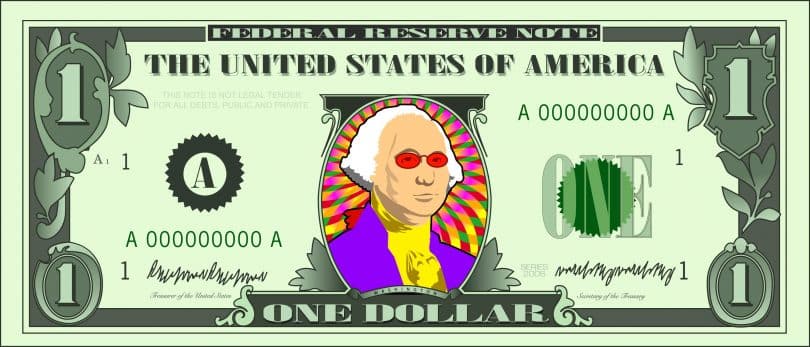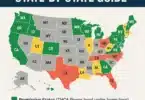The new year is always a time to look back and assess what went on last year. One of the big building news stories, is the growth and acceptance of psychedelic drugs, and the accompanying legislation for their decriminalization and legalization. One of the interesting ways to see this growth, is in terms of the money raised in psychedelics funding by different companies. Read on to find out how much money poured into the psychedelics industry last year.
What does it mean when a company raises funds?
The first and most obvious answer is that it means doing something to get more money. This need for more money comes from starting up or some sort of expansion plan by the company, which the company can’t itself afford, requiring it to go to investors to raise the money it needs to complete its plans. Investors then get a piece of the profits if the company makes any, with an understanding that should the company fail, that the investment is gone with no repayment.
Companies have a few main ways of raising money when needed, and taking from investors is just one. The company can also reinvest its own profits, take out loans from banks or other lending institutions or people, or sell parts of itself as shares to the public. In the case of the latter, it means individuals who buy shares taking ownership of a small piece of the company, and getting a profit if there is any, thereafter.
When it comes to taking money from investors, it starts with ‘seed’ funding. This refers to the first level of funding, and is often the first money raised by a company. The name comes from the idea that this funding acts like a seed from which the rest of the company will grow. If a company needs initial money for things like market research, this is the funding that applies to get it started. If a company takes money even before this period – when it truly is just organizing and planning, then it’s considered pre-seed funding.
Thank you for being here. Access direct updates by signing up to the Cannadelics Weekly Newsletter; which also gets you a host of deals on cannabis flowers, vapes, edibles, smoking equipment, cannabinoid compounds, and a lot more. We’ve got great stuff: come on and get it!
Sometimes seed funding comes from angel investors. While most investing is done by venture capital firms that have investment funds to invest through, angel investors are usually wealthy individuals who invest their own money.
After the initial stage for funding, you might notice that companies are said to be in different rounds of funding: series A, series B, and series C. Series A follows seed funding, and there are more expectations attached to it. By this point, the company should have a better plan developed, and strategy for earning profits long term. It’s great to have a business idea, but many fail, and this round is when a business must really show that it can make its idea happen.
Series B funding is next, but by this point, a business shouldn’t be in the development stage anymore, and should be functioning as a regular company. This level of funding is meant for the company to further expand to meet the goals it previously developed. By now a company is established, and has a decent valuation. It has already proven itself to a degree.
Series C funding applies to companies that are doing well, and have proven themselves already, but want to go even further, and need some extra funds to do so. Maybe the company wants to develop a new product line, or open an office in another country, or buy out another company. This round of funding indicates a company is on an upward trajectory, and looking to do even more. It would be nearly impossible to bring in money at this level (or any other) if a company has not proven itself on previous levels.
What’s the deal with a new psychedelics industry?
That a company raises money, doesn’t mean it will succeed, and that there’s interest in a company, doesn’t mean an industry will ultimately prevail. Or that it will prevail in the estimated way. Think of the weed industry, and the massive layoffs going on across the board. Everyone still smokes weed, but this hasn’t done much to benefit small operators, and even the bigger ones are having issues. The industry prevails, but not in the way that investors had hoped for.
In reality, we don’t know where the money is with psychedelics and hallucinogens. There’s a growing push for medical markets, and increasing decriminalization, and non-medical legalizations. But, like the weed industry, this industry is led by a group of fungi which anyone can grow, making it unclear who will ultimately benefit from it, and how. Perhaps those selling grow kits will win out over those investing in recreational products. Or maybe a medical market will be strong enough to propel medical sales farthest. The cannibalization of the weed medical market by the recreational one, makes this questionable though.

Looking at the present situation, and aside from paraphernalia like growing kits and equipment, the ketamine industry (whether gray market or government-approved) is the only place where money is currently made on a hallucinogen. This is aside from DXM (dextromethorphan) which has for years been a staple in cold medicines.
Industries in the legalized states of Oregon and Colorado haven’t started, so how well pricing and sales turn out, is still unknown. We know Colorado went a step further, pre-emptively legalizing MDMA, which goes into effect upon a government approval; and which shows an expectation that an industry will exist here. But we don’t know how it will turnout.
What we do know is that there’s interest, and this interest has resulted in the growth of psychedelics companies. One of the best ways we can analyze this growth, is by how quickly companies are expanding, and who is investing to help them expand. In 2022 the numbers weren’t small, showing an increasing interest in getting in on this new industry, regardless of where it ends up going.
Psychedelics funding in 2022
In 2022, the following eight companies brought in a total of $257.5 million in funding: Lusaris Therapeutics, Osmind, Delix Therapeutics, Gilgamesh Pharmaceuticals, Sensorium Therapeutics, Empyrean Neuroscience, Apollo Neuroscience, and Mindstate Design Labs. These do not make up all psychedelics companies that sought funding in 2022, but give an idea of the kind of money flowing in. We don’t have funding totals yet for 2022, and we don’t know if the totals will beat 2021. All in the above list were new entrants in the 2022 development world for psychedelic drugs.
One of the bigger new funding winners is Lusaris Therapeutics, which brought in $60 million, in series A funding; which was announced in the fourth quarter of 2022. Lusaris is working on several products, including LSR-1019, “a sublingual formulation of 5-MeO-DMT for treatment-resistant depression.” The lead funder is RA Capital, which also acted as an incubator for the company, meaning it was substantially helpful monetarily in getting Lusaris going.
Two of the companies from that list are already at series B funding, indicating they’re doing well, and looking to more efficiently reach their goals. Osmind, a technology platform for mental health and research, took in $40 million, making for a total funding amount of $57.2 million, from 20 different investors. Gilgamesh Pharmaceuticals also did series B funding, taking in $39 million, for a total of $68.6 million from 18 investors. Gilgamesh creates psychedelic medications for a range of mental health disorders.

Did psychedelics funding increase in 2022?
It doesn’t seem like it. The numbers for 2022 aren’t firm, but they do seem to decrease a bit from the previous year. According to Crunchbase, 2021 saw the highest funding for psychedelics, with more than $368 million coming in, mostly to startups in the biotech industry. This whole trend of investing in psychedelics is relatively new, and only started in greater numbers a couple years ago. The first breakthrough was Compass Pathways, which raised $146 million in September of 2020 for its IPO. It raised another $144 million less than a year later.
Since that time, the money has been pouring in, though a decrease from 2021 to 2022 could indicate a certain amount of apprehension on the part of investors. This was the same situation with the cannabis industry, first with CBD, and then with the plant in general. And much like with weed, the path to getting rich isn’t necessarily clear cut.
However, to give an idea just how much this is expanding out, the US’s own National Institute of Health started funding psychedelics research after decades of ignoring it. This is also true in universities, which are often the site of clinical trials, and which all seem to be trying to put together research centers now. Pharmaceutical companies are getting in on it too. Many have already partnered with universities to get in on the game; making people like me a bit unsettled, as such a relationship can greatly call into question trial results.
Market research firm InsightAce Analytic, valuated the psychedelics market at $3.6 billion in 2021, and made the prediction of a market worth $8.3 billion by 2028. How realistic is this? We really don’t know. Much like cannabis, there are curveball aspects, like home growing and black markets, that can greatly change the landscape. Anyone trying to predict cannabis revenue now, as compared to a few years ago, is going to have a much more conservative estimate. And all those estimates about where the CBD industry would be by now? No one talks about it anymore.
Conclusion
If an official industry is really to make money, those running it have to think about the barriers, and figure out a way through. Maybe it will be in growing equipment and other paraphernalia. Maybe it’ll be a high powered medical industry. And maybe in another couple years, the black market will have beaten it down, and we won’t be talking about a psychedelic industry at all. As of right now, a lot of companies have raised a lot of money in psychedelics funding, and we know that their one main mission, is to see a return.
Hello readers! Welcome to Cannadelics.com; where we work to bring you the best reporting in the cannabis and psychedelics industries. Be a part of it regularly to remain in-the-loop on important stories, and subscribe to the Cannadelics Weekly Newsletter, so you’re never late to get the news.







